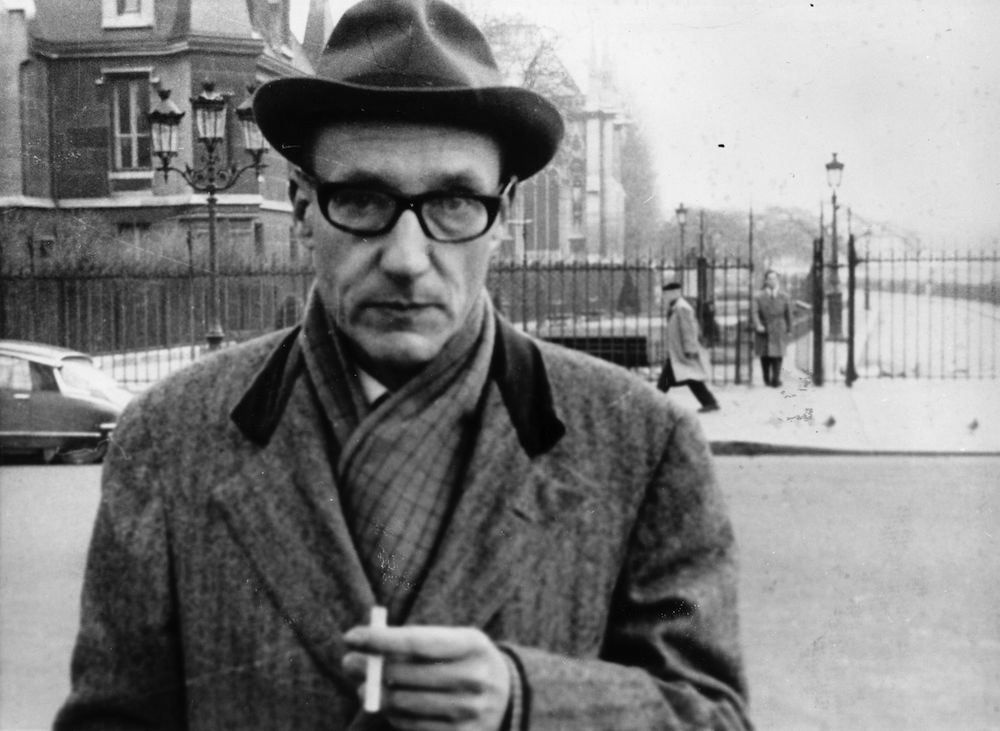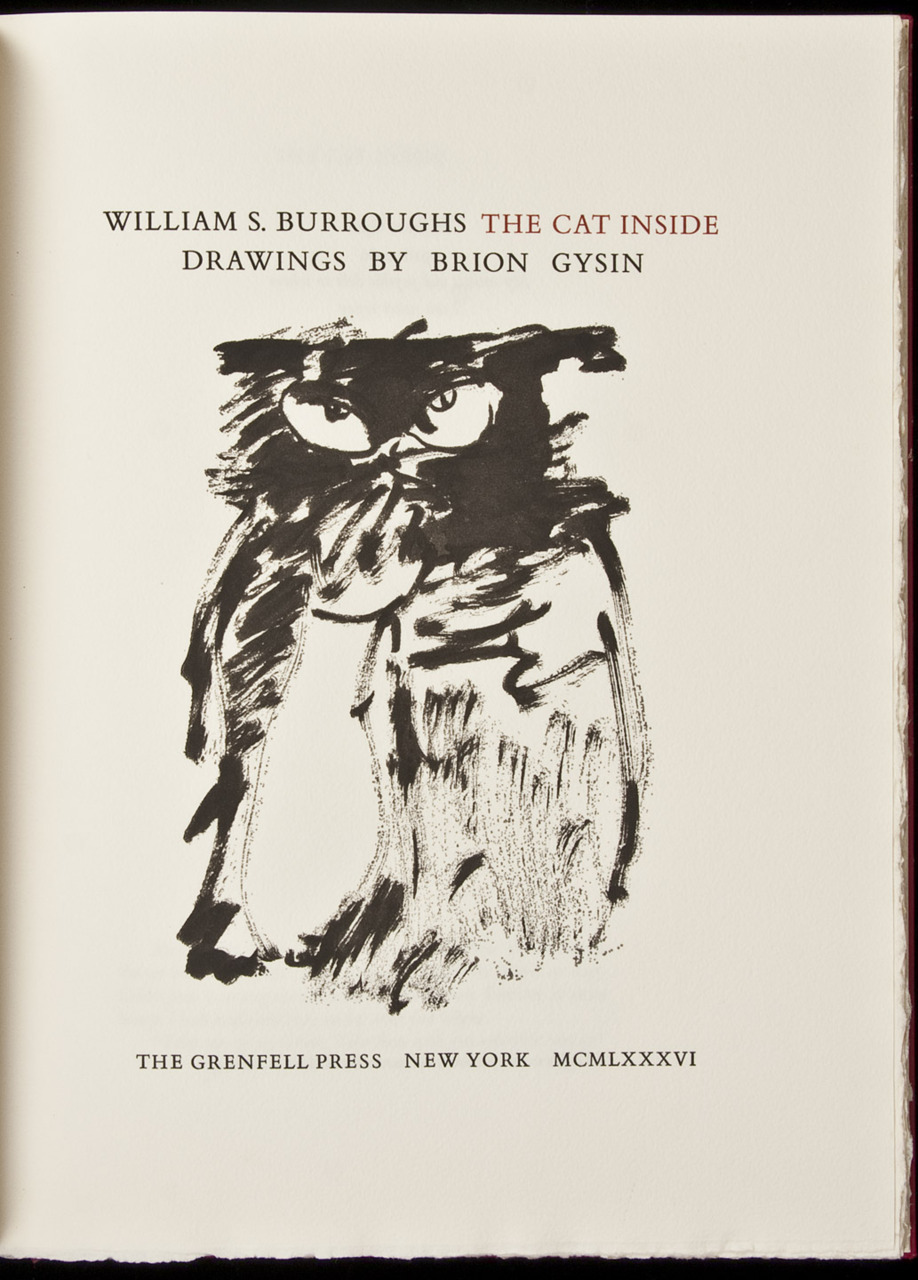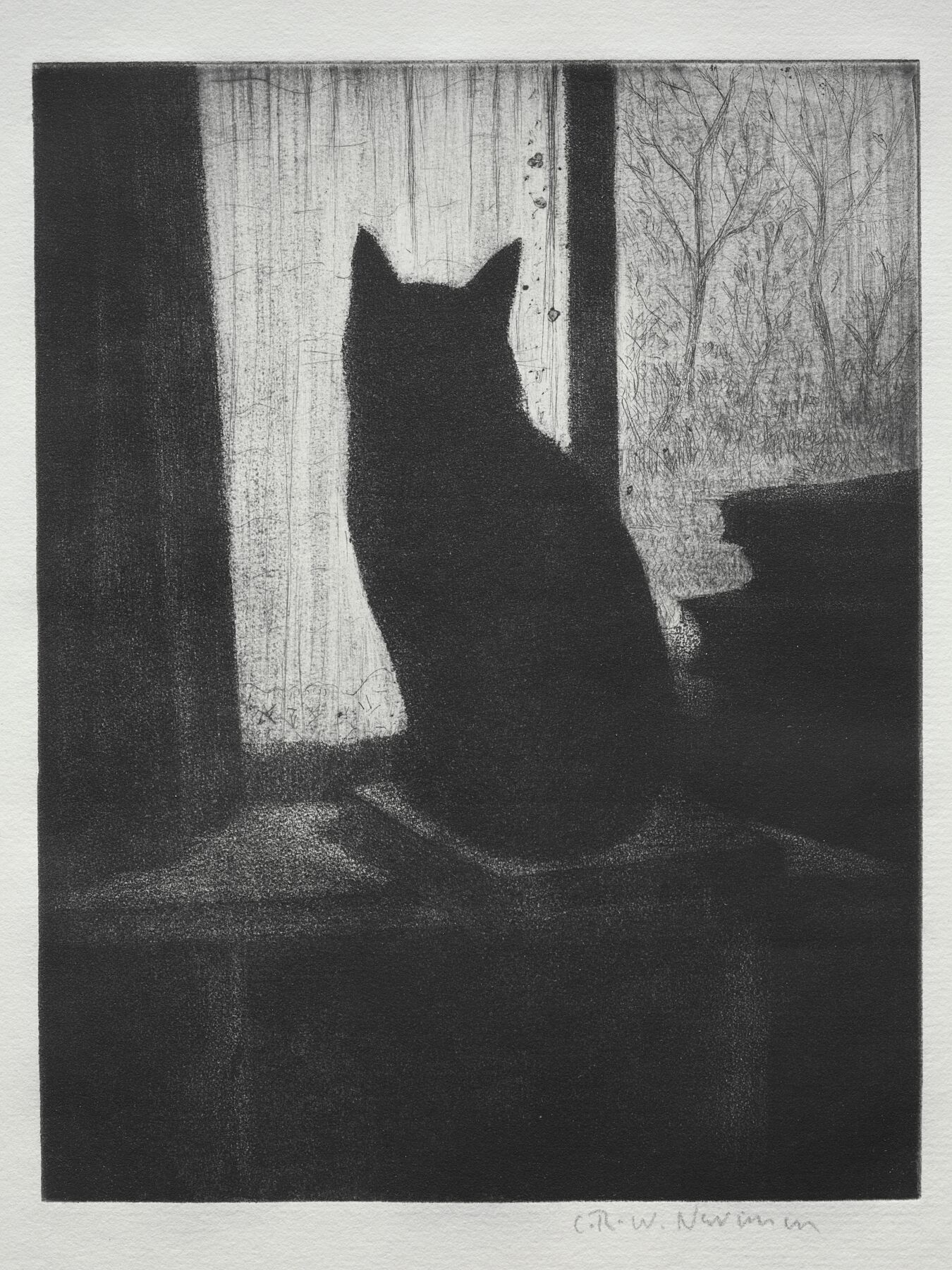“We are the cats inside. We are the cats who cannot walk alone, and for us there is only one place”
– William S. Burroughs

American writer William Seward Burroughs (1914 – 1997), author of the cult novel ‘Naked Lunch’.
It wasn’t all writing, drug taking, walks among the mysteries, cut ups, fomenting revolution, guns and launching assaults on Soho coffee bars in a typical day in the life of William S. Burroughs (February 5, 1914 – August 2, 1997). A big part of his life was taken up by a love of cats.
These “psychic companions” were natural “enemies of the state” – cats Ruski, Horatio, Fletch, Spooner, Calico and others.
Writing in his journal in June of 1997, Burroughs observes the connection:
Ginger touches me with her old paw when she wants something. She just touched me, and I let her out.
As he later noted:
This book is about inter-species contact, not inter-species communication. There is a basic difference between communication & contact. Communication is designed to avoid contact, to maintain a distance across which communication can take place. Contact avows identification with a creature you contact, & this can be very painful. Communication can be forced. Contact cannot. You cannot force anyone to feel. This cat book recounts my own experiences with inter-species contact. You know when it happens. It can’t be faked…
In the final entry of his journal, and what were possibly the last words he wrote, Burroughs offers:
Thinking is not enough. Nothing is. There is no final enough of wisdom, experience — any fucking thing. Only thing can resolve conflict is love, like I felt for Fletch and Ruski, Spooner, and Calico. Pure love.
Love? What is It?
Most natural painkiller what there is.
LOVE.
The Cat Inside
There’s more of Burroughs on cats in the The Cat Inside, his autobiographical novella with illustrations by Brion Gysin. The book was first published by Grenfell Press in 1986 in an edition of only 133 copies; it was later reissued by Viking Press in 1992.
Burroughs adored cats. When the poet American Allen Ginsberg asked Burroughs whether he wanted to be loved, the writer answered: “Depends… by who or by what? By my cats, certainly.”

The Cat Inside – illustrations by Brion Gysin
Loving cats is easy. But you have to earn their love. Burroughs puts down a copy of Cat Fancy magazine, to which he subscribed for many years, and notes:
The cat does not offer services. The cat offers itself. Of course he wants care and shelter. You don’t buy love for nothing.
Rule 2:
It’s illegal to allow your cat to run free. Dogs and cats must be on the owner’s premises and under verbal command at all times. It’s law.
For Burroughs, cats represented possibilities. They are the stuff of dreams and ideals:
I am cast in the role of the Guardian, to create and nurture a creature that is part cat, part human, and part something as yet unimaginable, which might result from a union that has not taken place for millions of years.
He also indulged his mystical proclivity, as when he challenged the accepted history of cat domestication:
Cats didn’t start as mousers. Weasels and snakes and dogs are more efficient as rodent-control agents. I postulate that cats started as psychic companions, as Familiars, and have never deviated from this function.
Oh, and dogs. Their lovers may care to look away now:
“I am not a dog hater. I do hate what man has made of his best friend. The snarl of a panther is certainly more dangerous than the snarl of a dog, but it isn’t ugly. A cat’s rage is beautiful, burning with pure cat flame, all its hair standing up and crackling blue sparks, eyes blazing and sputtering. But a dog’s snarl is ugly, a redneck lynch-mob P***-basher snarl… snarl of someone got a “Kill a Queer for Christ” sticker on his heap, a self-righteous occupied snarl. When you see that snarl you are looking at something that has no face of its own. A dog’s rage is not his. It is dictated by his trainer. A lynch-mob rage is dictated by conditioning.”
But the dog does not do the lynching. In the book, Burroughs recall the killing of a badger:
At Los Alamos Ranch School, where they later made the atom bomb and couldn’t wait to drop it on the Yellow Peril, the boys are sitting on logs and rocks, eating some sort of food. There is a stream at the end of a slope. The counselor was a Southerner with a politician’s look about him. He told us stories by the campfire, culled from the racist garbage of the insidious Sax Rohmer – East is evil, West is good.
Suddenly, a badger erupts among the boys – don’t know why he did it, just playful, friendly and inexperienced like the Aztec Indians who brought fruit down to the Spanish and got their hands cut off. So the counselor rushes for his saddlebag and gets out his 1911 Colt .45 auto and starts blasting at the badger, missing it with every shot at six feet. Finally he puts his gun three inches from the badger’s side and shoots. This time the badger rolls down the slope into the stream. I can see the stricken animal, the sad shrinking face, rolling down the slope, bleeding, dying.
“You see an animal, you kill it, don’t you? It might have bitten one of the boys.”
The badger just wanted to romp and play, and he gets shot with a .45 government issue. Contact that. Identify with that. Feel that. And ask yourself, whose life is worth more? The badger, or this evil piece of white shit?
Here he is telling that story and more as he reads from the book:
From: Last Words: The Final Journals of William S. Burroughs
Would you like to support Flashbak?
Please consider making a donation to our site. We don't want to rely on ads to bring you the best of visual culture. You can also support us by signing up to our Mailing List. And you can also follow us on Facebook, Instagram and Twitter. For great art and culture delivered to your door, visit our shop.




